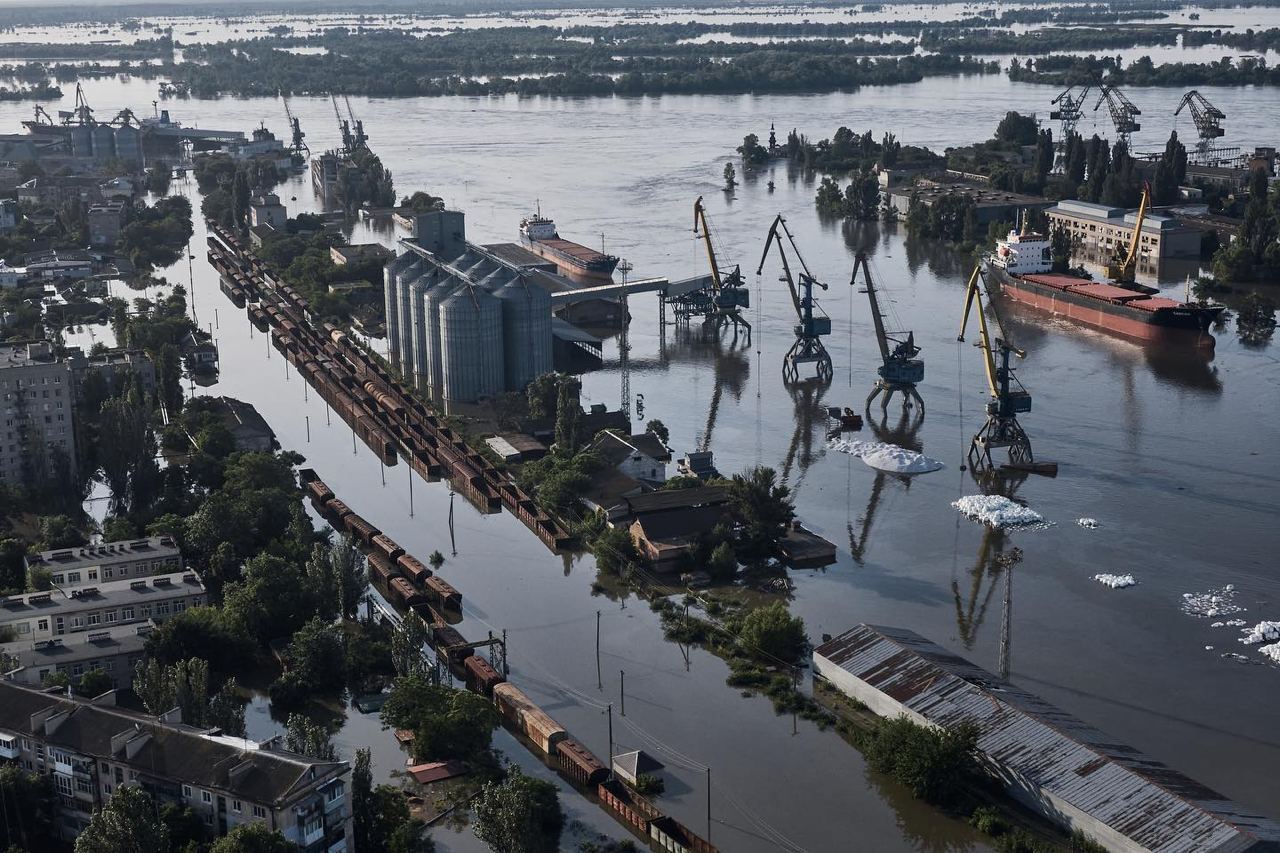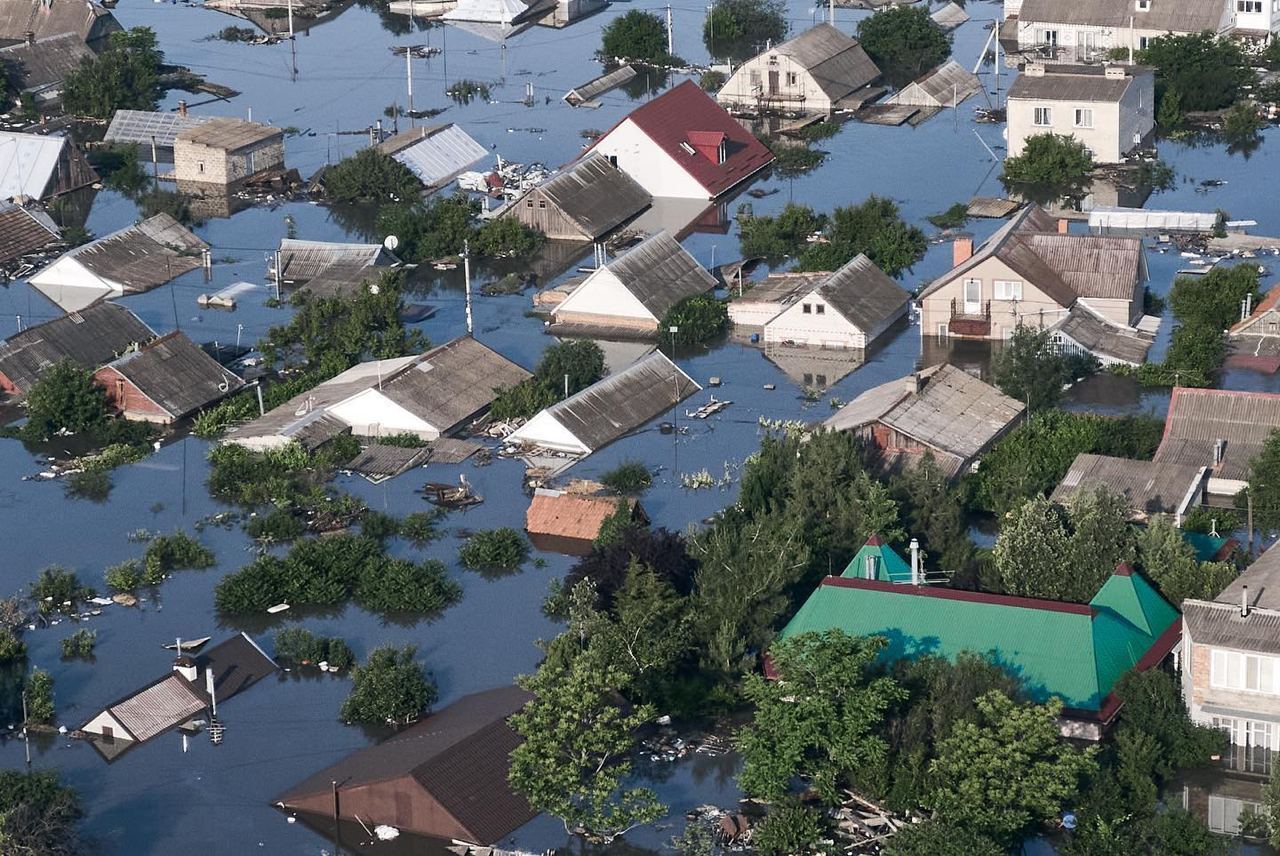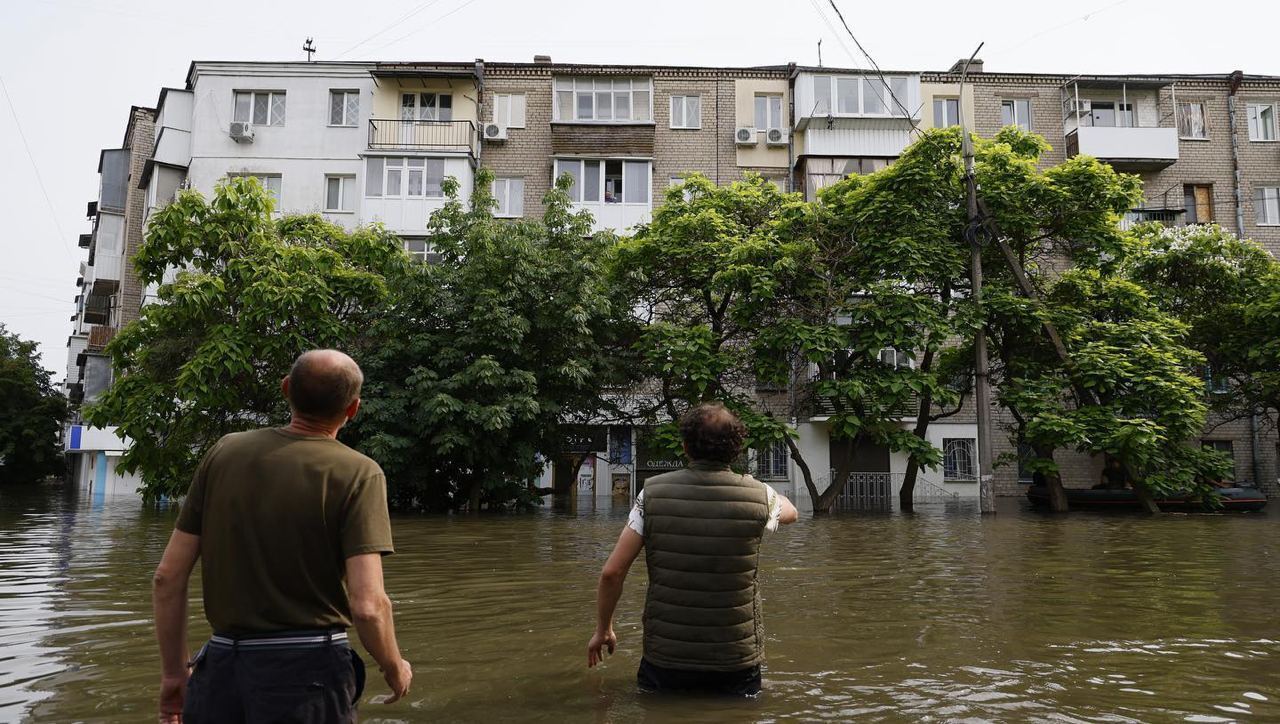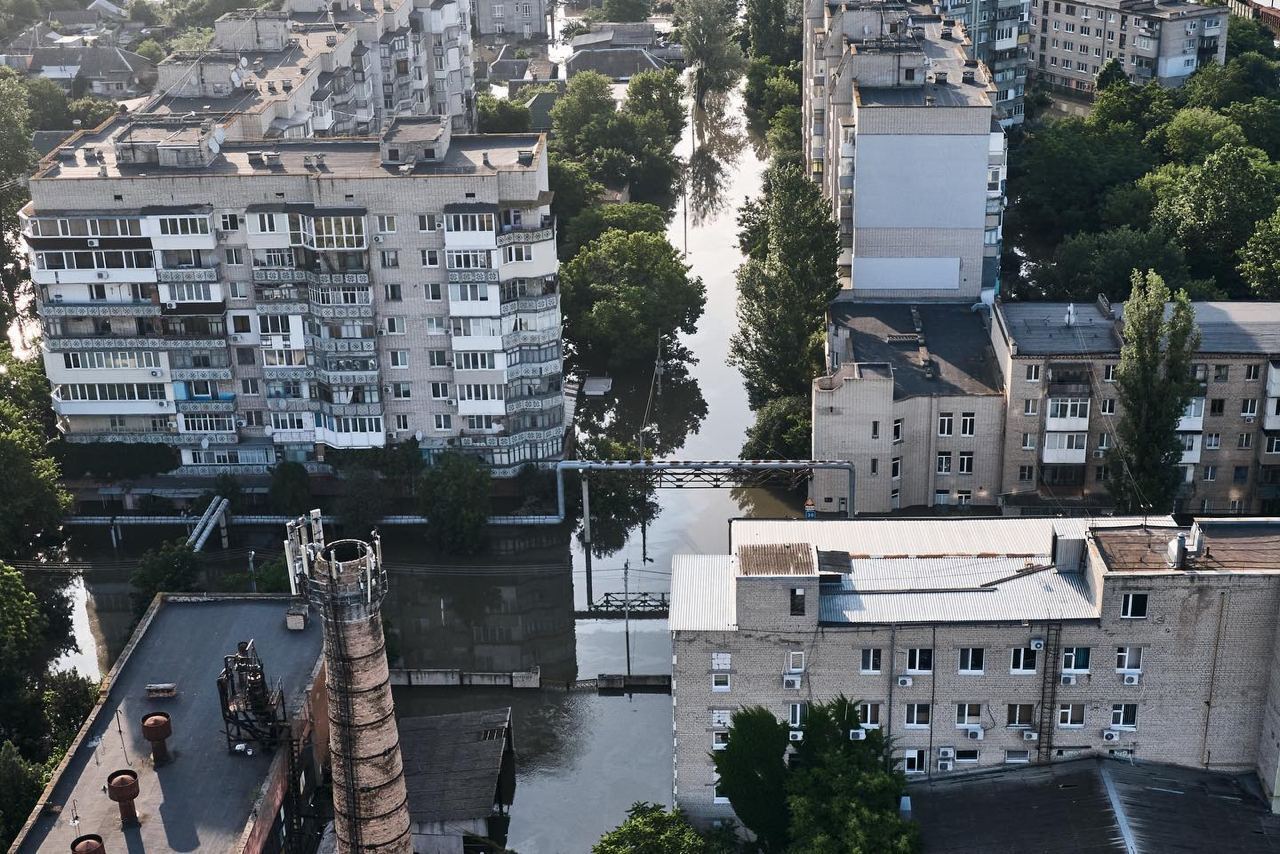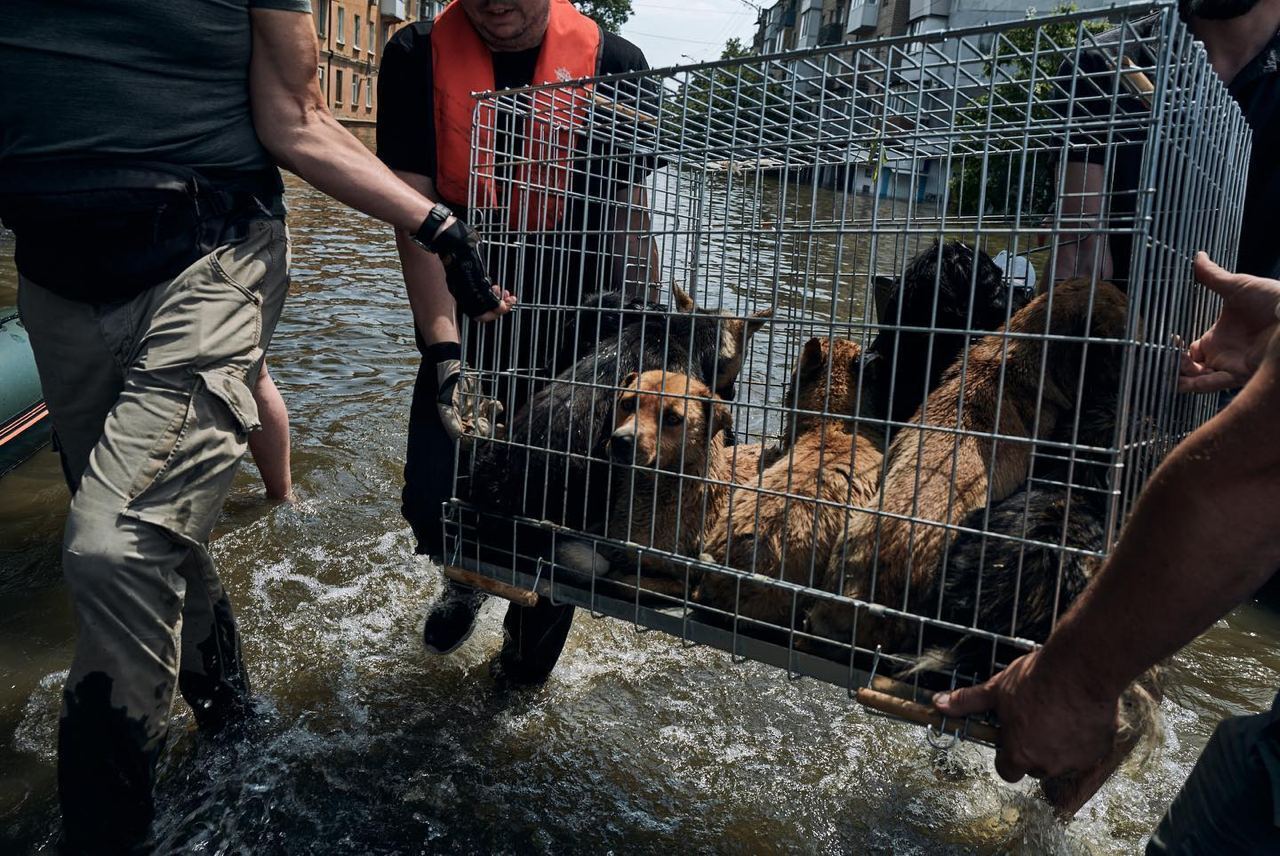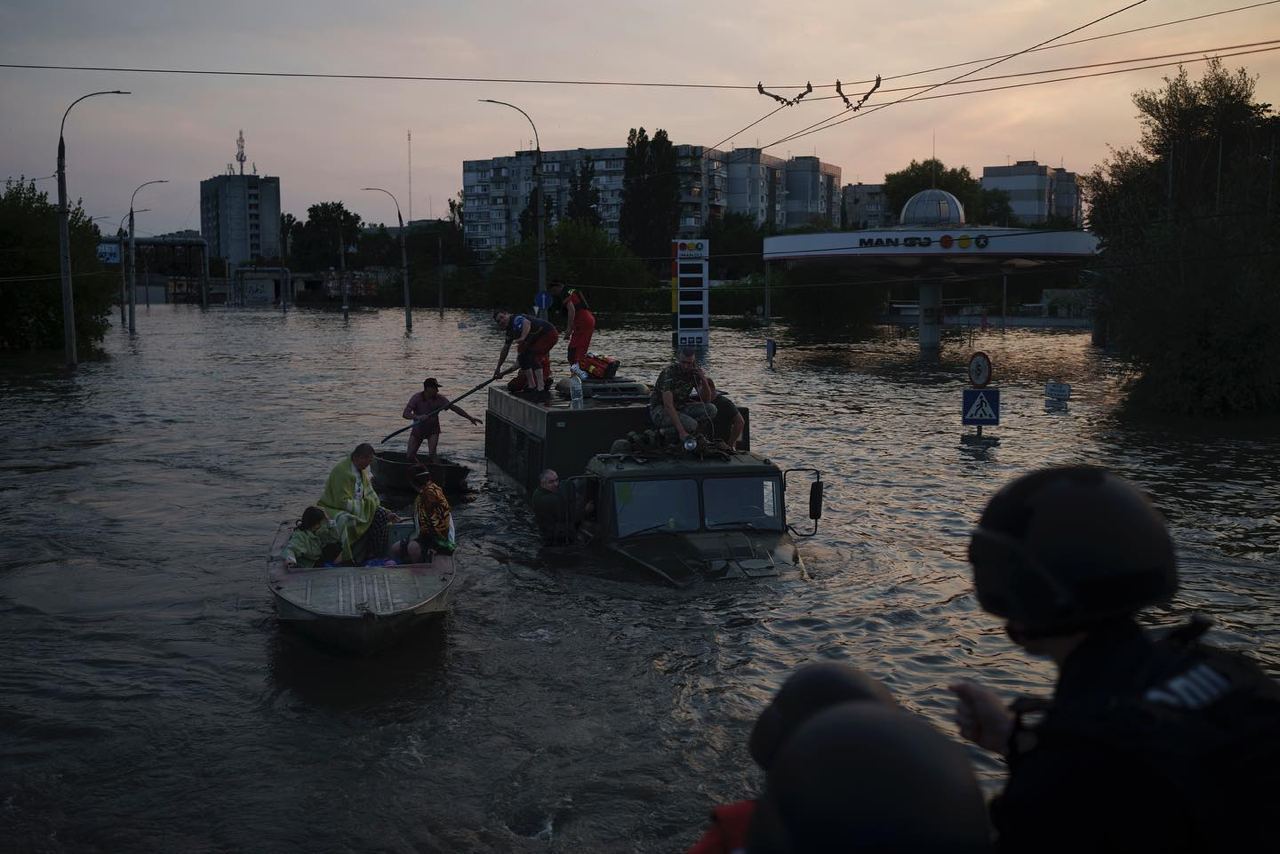War in Ukraine
A year ago, the occupiers blew up the Kakhovka hydroelectric power station: what were the consequences of the disaster and what does the former reservoir look like now? Photos
Exactly one year ago, on June 6, 2023, at approximately 03:00, Russian occupation forces blew up the dam of the Kakhovka hydroelectric power plant in the Kherson region. This explosion caused large-scale flooding of settlements near the Dnipro River, numerous human casualties, serious environmental consequences, and affected the safety of the Zaporizhzhia Nuclear Power Plant.
The Kakhovka HPP was the fifth largest in Ukraine and the largest in terms of shallow water. Read more about the consequences of the disaster and the current state of the former reservoir in the OBOZ.UA article.
As a result of the hydroelectric dam explosion, houses, fields, and settlements were submerged, especially the left bank of the Kherson region.
The Defence Intelligence of Ukraine has previously reported that there is direct and indirect evidence that the military and political leadership of the Russian Federation was involved in the explosion of the hydroelectric power plant. Moreover, Ukraine is confident that these actions of the occupiers were aimed at creating chaos and delaying the advance of the Ukrainian Defense Forces.
Nova Kakhovka and the Kakhovka hydroelectric power plant have been under occupation by the Russian army since the beginning of the full-scale invasion. Along with the plant, the enemy took all the specialists working at the facility hostage. Numerous interventions by the occupiers in the operation of the hydroelectric power plant have been repeatedly reported, including the undermining of the North Crimean Canal to supply water to the Crimean peninsula. Russian troops and command posts were also deployed on the territory of the facility.
Information about the mining of the station appeared back in 2022. At that time, the National Security and Defense Council of Ukraine considered this development and appealed to the international community to prevent it.
However, on June 6, 2023, at 2:35 a.m. and 02:54 a.m., seismic sensors in Ukraine and Romania recorded signs of powerful explosions. U.S. reconnaissance satellites with infrared sensors also detected heat signatures indicating a powerful explosion in the dam area.
Subsequently, Vladyslav Nazarov, spokesman for the South Operational Command, officially confirmed that Russian occupation forces had blown up the Kakhovka HPP, and Ukrhydroenergo announced that the plant was not subject to restoration.
In Nova Kakhovka, the zoo, summer theater, café, and playground were flooded in the morning. At 12:30 it became known that the city center was flooded. It was difficult to get more reliable information because the occupation authorities blocked mobile communications.
"We also have information about what is happening in the occupied part of the Kherson region. Even the word "catastrophe" is not enough for this. The Russian evil has formed special groups there to remove and, obviously, hide the bodies of the dead people," President of Ukraine Volodymyr Zelenskyy said.
As of the morning of June 7, the town of Oleshky was already completely flooded, with water reaching the roofs of private homes.
Initially, the Russian side denied the allegations of the hydroelectric power plant blowing up but later began blaming Ukraine for the incident. According to Putin's spokesman Peskov, Ukraine allegedly took such actions because of the failure of the counteroffensive, while Russian Defense Minister Sergei Shoigu claimed that Ukraine had gone ahead with the bombing with the intention of moving military units from Kherson region to the offensive areas.
At the same time, Russia's representative to the UN, Vasyl Nebenzia, cynically announced his intention to convene a meeting of the UN Security Council in response to the destruction of the Kakhovka hydroelectric power plant.
In connection with the destruction of the dam, the Security Service of Ukraine opened criminal proceedings against the Russian military under two articles of the Criminal Code of Ukraine: Article 438 – violation of the laws and customs of war, and Article 441 – ecocide.
According to the UN Independent International Commission, the destruction of the Kakhovka hydroelectric power plant in the territories under Ukrainian control killed 33 people, injured 28, and left more than 40 people missing. It is impossible to accurately determine the consequences of this disaster in the temporarily occupied territories.
The draining of the Kakhovka Reservoir also resulted in the mass death of aquatic plants and animals. The explosion of the hydroelectric power plant destroyed young fish, including more than 70 species of fish, 18 of which are listed in the Red Book.
An investigation by the Associated Press revealed that the consequences of the destruction of the Kakhovka hydroelectric power plant and subsequent flooding were much more serious than the Russian command from the occupied territories, which claimed 59 deaths. According to the AR, at least hundreds of people died in the occupied Oleshky, where the population is about 16,000.
In addition, the dam's destruction caused Ukraine nearly $14 billion in damages, according to the UN's web portal in Ukraine.
Current state of the Kakhovka reservoir area
The main measures to eliminate the consequences of the disaster were completed by August 30, 2023. In July, a two-phase plan to restore the Kakhovka hydroelectric power station was announced, as reported by Vadym Kraynyk, Chairman of the Board of Ukrhydroproject.
"The first stage is the preparatory period. In particular, the design of structures, such as the upper and lower temporary dams, the arrangement of a transport crossing from the right to the left bank, and structures that will allow sanitary passes to the lower reservoir. The second is a survey of the structures that have been destroyed today, determining which structures can be restored, which need to be dismantled and new ones built, that is, developing a project to restore the hydroelectric power plant and for construction," Kraynyk explained.
In the same month, the Cabinet of Ministers approved a resolution to launch a pilot project to restore the Kakhovka HPP, designed for two years.
In an interview, Oleksandr Prokudin, head of the Kherson Regional Water Administration, said that scientists are now working on the restoration project. According to him, it will take at least five years to build a new plant and 1 to 2 billion euros.
A year after the Russian military blew up the Kakhovka hydroelectric power plant, a dense forest grew on 150,000 hectares of the artificial reservoir.
On the anniversary of the disaster, President of Ukraine Volodymyr Zelenskyy published a post emphasizing that the explosion of the hydroelectric dam was a deliberate and calculated crime of the Russian occupiers.
"A year ago, the Russian occupiers blew up the dam and buildings of the Kakhovka HPP. It was a deliberate and calculated crime – one of their biggest crimes against nature and people of our entire region. Even the exact number of deaths is impossible to determine now, as the occupied part of Kherson region suffered the most severe damage. In total, at least tens of thousands of people were affected, and hundreds of thousands were left without drinking water. Large areas of Ukraine were flooded and the Kakhovka Reservoir was destroyed, which ensured, among other things, the stability of the Zaporizhzhia Nuclear Power Plant, the largest in Europe. The direct consequences of this crime were felt even in the neighboring countries of our Black Sea region," the President said.
He noted that in a year our state and people managed to eliminate part of the consequences of this disaster.
"I am grateful to everyone who rescued people, helped to provide housing, and restored the supply of drinking water. This is a significant work. And no less significant work will be to bring Russia to justice for this and other war crimes – deliberate Russian attacks on people and humanity, on all living things. Everyone who works for justice for Ukraine and for the restoration of our country is a defender of life," Volodymyr Zelenskyy emphasized.
At the same time, Petro Andriushchenko, an advisor to the mayor of Mariupol, called the explosion of the Kakhovka hydroelectric power plant by Russians "the largest man-made disaster of the 21st century and a symbol of unpunished evil."
"Exactly one year ago, Russians blew up the Kakhovka dam. This is the biggest man-made disaster of the 21st century.
The consequences are terrible. Looking back, listening to some other escalation on the part of Russia, only one thing becomes clear. Apart from the nuclear strike, the Russians have already done everything they could beyond the bounds of humanity and humanism. They have nothing left to scare us with.
However, they are still a symbol of unpunished evil and what it leads to," Andriushchenko wrote.
Only verified information is available on our Obozrevatel Telegram channel and Viber. Do not fall for fakes!








